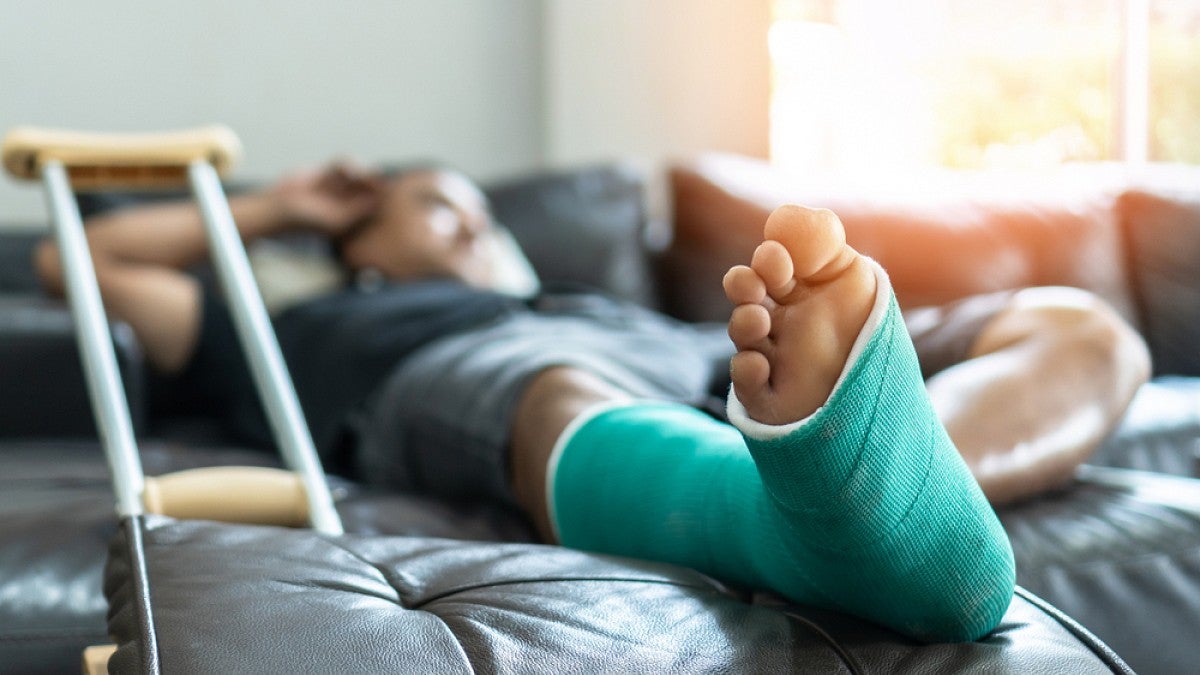Racing into rehab too aggressively after a severe ankle sprain or bone fracture may hinder the ability of blood vessels to regrow and form a healthy network of blood vessels in the affected tissue.
That’s the main message from new research that used 3D models made of a water-rich collagen gel cultured with fragments of blood vessels taken from fat. The work, done in a collaboration of scientists from the University of Oregon’s Phil and Penny Knight Campus for Accelerating Scientific Impact, Georgia Tech and three other institutions, is detailed in Science Advances.
The work by the nine-member research team revealed fundamental new insights about the effects of mechanically loading tissues trying to reestablish vascularization following injury, said study co-author Robert Guldberg, vice president and Robert and Leona DeArmond Executive Director of the Knight Campus.
Finding that sweet spot of timing and intensity of rehabilitation, he said, is challenging.
“If you get the loading right, you stimulate increased growth,” Guldberg said. “If you get it wrong, however, you can completely inhibit the vessels from branching and growing. Our research has reached a point where we can begin to make suggestions. Our message to physical therapists and clinicians is to not be overly aggressive early on.”
Mechanical loading refers to physical stress, such as exercise or physical therapy.
The regrowth of a vascular network is key to successful tissue regeneration following injuries or surgical procedures like spine fusion. Blood vessels deliver oxygen and nutrients and remove waste products from tissue. If the process is cut short, fibrosis can set in, resulting in scarring, chronic pain and an incomplete return to full strength.
The 3D models, which used fat from rats cultured into a hydrogel, allowed testing of mechanical loading effects on vascular growth, a multistaged process called angiogenesis, in a controlled setting. The models were fitted into two differently sized platens, or framing structures, to study the impacts of compression and shear at different times and intensities.
By introducing molecular inhibitors to cell-signaling pathways, the team identified specific biological mechanisms regulating the effects of early or late loading times at low, medium and high levels of deformation applied to vascular networks forming in the gels.
The resulting data, the researchers wrote, demonstrated that delayed loading led to longer, more extensively branched microvascular networks than early loading over a wide range of strain magnitudes. High deformations applied early stopped vascular branching and growth.
Exactly how the optimal timing seen in the study translates into actual human treatments will require additional study. Next up, Guldberg said, is experimenting with models drawn from human tissue “to build a vascular avatar of the patient to model how repairs progress.”
Another team, which includes Guldberg, detailed the creation of modular microcages that could be used as size-adjustable implantable scaffolds for tissue engineering, especially in cases of large tissue defects or injuries. That work appeared online July 23 in Advanced Materials.
Eventually, Guldberg said, strategies could emerge from this ongoing research to help guide individualized treatment plans for patients whose recovery programs may vary widely based on their injuries. There may be ways, he added, to develop therapeutic drug treatments in combination with time-varying exercise plans to accelerate tissue regeneration and patient recovery.
“Our work is really about guiding physical therapists and clinicians to be able to optimize their treatments of patients after serious injuries to accelerate a patient’s return to being functional and improve their long-term ability to regenerate their vascular tissue health,” Guldberg said.
The research also may help guide rehabilitative strategies, such as walking, running, jumping rope or lifting weights, following spine fusion, tendon and bone-repair surgeries where vascular networking needs to be rebuilt, he added.
“A continuing challenge, however, is measuring real-time mechanical data in patients,” he said.
Guldberg is addressing how to do just that in a partnership with fellow Knight Campus scientist Keat Ghee Ong, who joined the UO last summer. With help from UO’s Innovation Partnership Services, they have launched the Eugene-based Penderia Technologies Inc.
The company is developing orthopedic sensors based on Ghee Ong’s research in radio frequency identification technology. Using tiny devices implanted in suture anchors, screws or buttons used for surgical repairs, doctors or therapists could monitor an individual’s progress and chart a specific recovery exercise plan.
The National Institutes of Health (grant AR069297) and U.S. Department of Veterans Affairs (RX001985) supported the research.
Five co-authors, including lead authors Marissa Ruehle and E.A. Eastburn, of the Science Advances study are at Georgia Tech, where Guldberg had worked before joining the UO’s Knight Campus in August 2018. Other contributors are at the Atlanta VA Center in Decatur, Georgia, University of Utah and University of Pennsylvania.
—By Jim Barlow, University Communications


